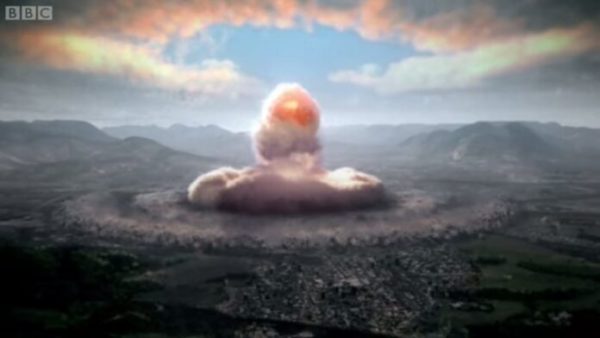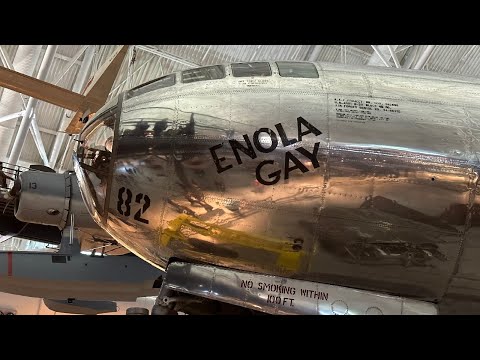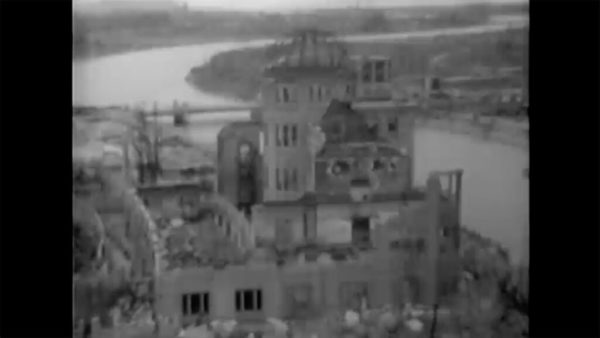 The Manhattan Project, Oppenheimer, Trinity, Little Boy, Fat Man, Enola Gay, fission, uranium, and plutonium are the first associations when mentioning the nuclear bomb, the most destructive weapon created by humans. The image of atomic “mushrooms” above Hiroshima and Nagasaki is likely the most horrifying symbol of human suffering and devastation to this day.
The Manhattan Project, Oppenheimer, Trinity, Little Boy, Fat Man, Enola Gay, fission, uranium, and plutonium are the first associations when mentioning the nuclear bomb, the most destructive weapon created by humans. The image of atomic “mushrooms” above Hiroshima and Nagasaki is likely the most horrifying symbol of human suffering and devastation to this day.
On August 6, 1945, the American bomber “Enola Gay” dropped a nuclear bomb of thirteen kilotons of uranium on Hiroshima to force Japan’s surrender. In a very short time, the city ceased to exist.
Out of a total of 75,000, 63,000 buildings were destroyed. About 80,000 people died from the destruction, fires, and radiation, and about 65,000 were injured. Subsequently, many citizens suffered from the effects of radiation, the so-called “atomic diseases.”

Three days after the attack on Hiroshima, Nagasaki was turned to dust by an even more destructive infernal device: Fat Man, containing twenty-five kilotons of plutonium, truly earned its nickname. The bomb exploded 469 meters above the city, producing a temperature of about 3,900 degrees Celsius, and the shockwave traveled at a speed of over a thousand kilometers per hour. About 40,000 people died, including eight Allied soldiers who were in captivity in the city.
It is a lesser-known fact that Nagasaki was not the primary target of the attack: the destructive bomb was actually supposed to fall on Kokura. However, when American bombers flew over that city, they couldn’t clearly see the target due to a 70% cloud cover. As the order was to attack only if they could visually confirm the target, they gave up on Kokura and continued towards the alternative destination, Nagasaki. The expression “Kokura’s luck” is still used in Japan to indicate an unusual escape from danger.
Shadows of the Victims Before opting for the extreme solution to end World War II, Americans studied the impact of radiation on the human body as part of the secret Project Sunshine. Stories that the U.S. government stole bodies from mortuaries to conduct such experiments, dismissed as nonsense in public, proved to be true, at least to a large extent—they did not take entire bodies, but parts of them. Furthermore, due to the need for young tissue, they recruited a network of agents worldwide whose task was to find recently deceased babies and children and take samples of their tissue, sometimes even entire limbs. They collected 1,500 samples—all without the consent of the deceased’s family members!

A particularly morbid detail is saved for last—after the bomb, on the sidewalks of Hiroshima and Nagasaki, shadows of deceased people and objects like bicycles and carts remained. How did the final moments of human lives get preserved in this way? Scientists explain that, after the explosion of the atomic bomb, intense light and heat spread from the point of implosion. Objects and people in their path blocked objects behind them, absorbing light and energy, and the surrounding light bleached the concrete or stone around the “shadow.” In the Hiroshima Peace Memorial Museum, such a human shadow etched into stone can be seen. It is believed to be the remains of a person sitting on the stairs at the entrance to the Sumitomo Bank branch at the moment the bomb was dropped on Hiroshima.
